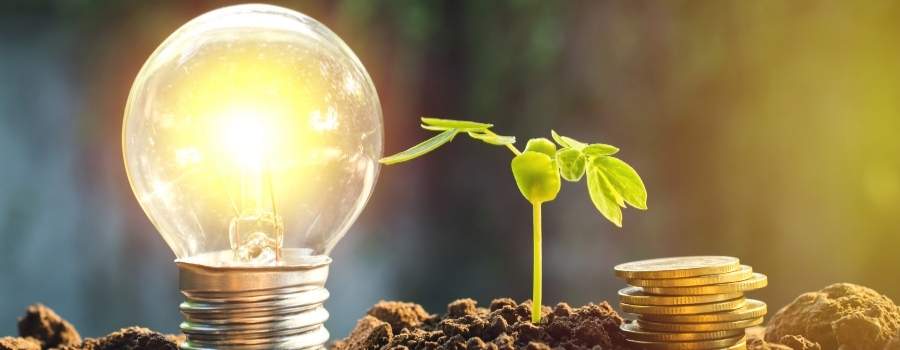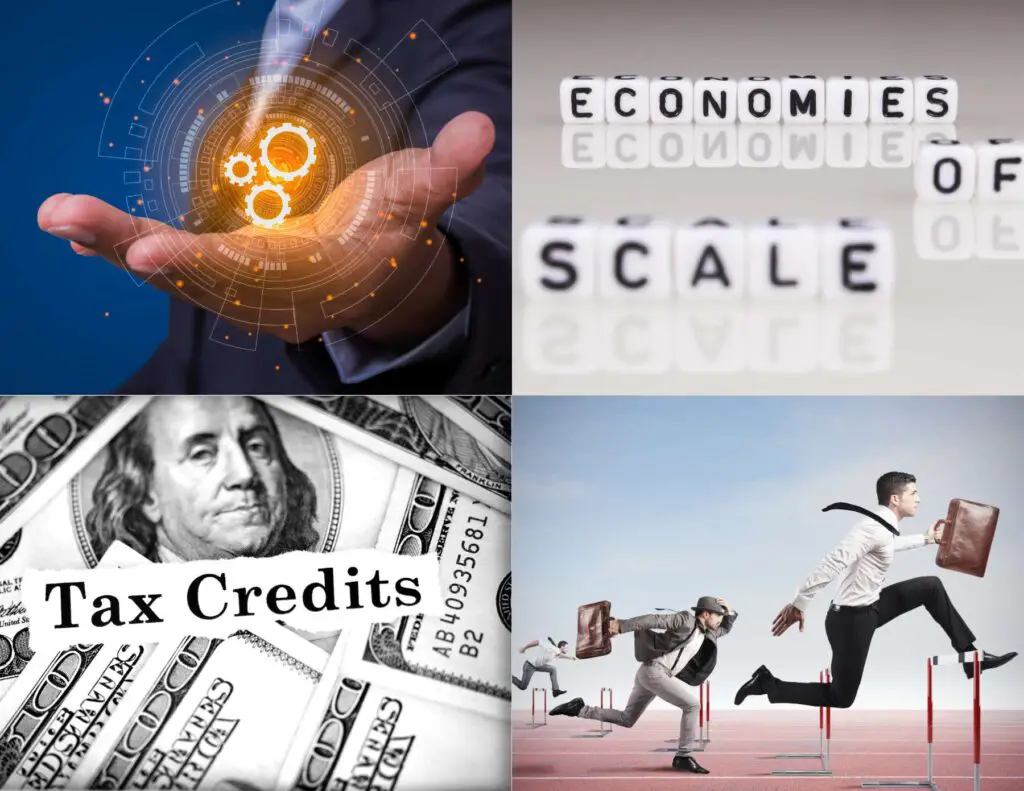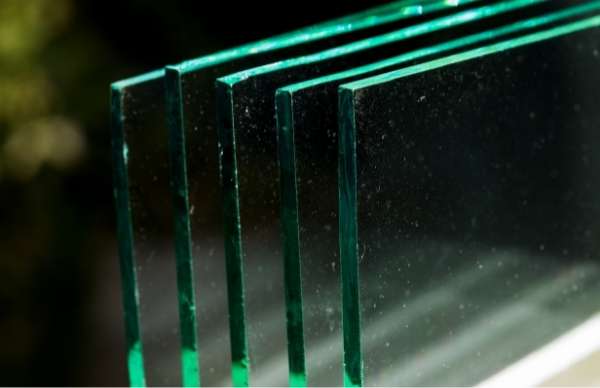
As the world continues to grapple with the urgent need to transition to cleaner and more sustainable energy sources, solar power has emerged as a promising solution.
With its abundance, widespread availability, and environmental benefits, solar energy has gained significant momentum in recent years. However, one important question remains on the minds of many: Will solar panels get cheaper?
This article delves into the current trends in solar panel prices, exploring the factors contributing to their decline and discussing the potential future cost reductions in the solar industry.
Will Solar Panels get Cheaper?
Solar panels and related components will continue to get cheaper due to advancements in technology, more competition in the sale and manufacturing of solar equipment, and the cost of solar energy has started to undermine the cost of coal.
The cost of solar panels has decreased by 89% since 2010.
There are two questions that come to mind for most people who are planning to run their homes on solar energy.
- Is solar energy getting cheaper?
- If it is getting cheaper, then should a person wait more before installing solar panels?
The answer to the first question is a resounding “yes.” Over the last 10 years, solar energy has become quite a bit cheaper. And, luckily, the cost will continue to get cheaper.
In fact, it’s expected to fall in price in the year 2050. And since the price will continue to change, there’s no point in waiting for them to be stable because there’s no exact bottom price of solar panels. Instead, make sure to install the solar panels right now, mainly because the tax credits can expire.
Renewable sources of energy are one of the most significant parts of the financial system today.
The answer becomes a little more complicated than just a plain “yes, solar panels are getting less expensive.” It’s important to understand why solar is going to get cheaper because one of the main reasons for anything to get cheaper is more options. More options mean more decisions and more complications.
Table of Contents
How Much Will Solar Panel Cost Be Reduced?
In general, the cost of solar energy has come down a huge amount in the last 40 years or so. The cost of solar cells in 1977 was about $77 for only one watt of power. But today, the cost is about $0.13 which is about 600 times less than what it was.
The price was determined by Swanson’s Law which states that the price of solar photovoltaic modules (solar panels) tends to drop 20 percent for every doubling of cumulative shipped volume. Based on present rates, costs go down 75% about every 10 years.
The relationship between price and manufacturing volume has a significant effect, because the whole global economy is moving rapidly towards renewable sources of energy.
What Are The Costs Of Installing Solar Panels?
The installation costs of solar panels have dropped by 61% from 2010, this is stated by the National Renewable Energy Laboratory (NREL.)
The current industry average cost is between $3 and $4 per watt. The average-sized solar power system is between 5 and 6 kilowatts, one kilowatt equals a thousand watts.
So, $4 (per watt) multiplied by 6000 (watts) = $24,000 per system. This cost is before the deduction of the ITC tax of 30%.
Any reduction in the overall costs comes mostly from the hardware costs with the bulk coming from the solar panels.

What Factors Have Caused Solar Prices to Drop?
The main factors that have caused the price of solar installation to drop are technological advancements, economies of scale, government incentives, and increased competition within the solar industry.
Technological Advancements
Over the years, there have been remarkable improvements in solar panel efficiency and production processes.
Enhanced manufacturing techniques, such as the development of more efficient solar cell materials and the use of automated production lines, have helped drive down the cost of producing solar panels. As a result, the overall cost of installing solar systems has decreased.
Economies of Scale
As the demand for solar energy has increased globally, the production of solar panels and related components has ramped up.
This increased production volume allows manufacturers to take advantage of economies of scale, resulting in lower unit costs.
Additionally, the expansion of solar energy markets has attracted more investment, leading to further cost reductions.
Government Incentives
Many governments around the world have implemented programs and subsidies to promote the adoption of renewable energy, including solar power.
These initiatives often include tax credits, rebates, and grants that help offset the upfront costs of installing solar systems.
By making solar more affordable for consumers and businesses, these incentives have stimulated demand and encouraged price reductions.
Competition
As more companies enter the market, competition among manufacturers and installers has intensified. This competition has driven innovation and efficiency improvements while pushing down prices.
Market competition encourages companies to find ways to differentiate themselves, whether through cost-effective manufacturing techniques, innovative product designs, or improved installation processes, ultimately benefiting consumers by making solar energy more accessible and affordable.
Hard and Soft Costs of Installing Solar Panels
When it comes to the installation of solar panels, there are many costs associated with them. The hardware costs include:
However, the hardware costs are only about 36% of the total cost of the solar system.
The remaining 64% accounts for the soft costs. These includes the other charges that a solar installer bears. The soft costs can include:
- Permitting
- Installation
- Customer Acquisition (i.e., Marketing and Sales)
- General Overhead Expenses
What Are The Maintenance Costs Of Home Solar Panels?
On average, the price to maintain solar panels is between $300 and $700. The cost of inspections and cleaning are around $400 for a basic 2kW solar power system.
Installing solar panels is not a short-term investment. Instead, it’s a long-term investment that benefits you for decades with low maintenance. However, low maintenance doesn’t mean NO maintenance.
Some costs associated with maintenance can include cleaning and general inspection which should occur once a year. Also, keep in mind that more inspections might be necessary after major storms or if you live in an area with high winds and heavy tree coverage.
How Much will Solar Energy Grow in The US?
The expansion of renewable sources of energy depends on two factors:
- Technology
- Rising Manufacturing Volume
Together, these two factors have reduced the cost of solar electricity a great deal. It is at the same level as coal and gas and can even be much cheaper in some cases.
Reduction In The Price Of Residential Solar Panels Since 2000
The price of solar panels has been reducing since the there year 2000. Many people reside in states which have RPS, or Renewable Portfolio Standards.
Now, what is RPS? Basically, an RPS is an order from the state or local government regarding renewable energy sources. It says that a fixed percentage of the state’s electricity must be from renewable resources.
Many States have goals of being 100% renewable energy compliant in the coming decades. For instance, Hawaii aims to be on 100% renewable sources of energy by the end of 2045. Maine is targeting 100% by the end of 2050. California, being a large state with a huge population, just wants to hit 60% as quickly as possible.
With these States and many more following in step, trying to become more renewable energy compliant there will be a market for competition between re-salers and installers. Competition almost always means costs will come down…that whole “supply and demand” thing.
How Much Can We Expect The Cost Of Solar To Fall?
BNEF has made some predictions related to the cost of solar panels in the future. If these look unconventional, keep in mind that most people have always underestimated how fast green technologies; including batteries, electric cars, solar, and wind energy would grow.
All these technologies have grown much quicker than most people have predicted. That’s why these predictions by BNEF might be underestimating the market trends that are actually happening or will happen.
Let’s have a look at some of the highlights of BNEF from the energy outlook of 2019:
- The price of solar PV(photovoltaic modules…aka solar panels) have fallen by 89%
- By 2030, solar PV costs will fall by 63%. That means the utility-scale would just cost 2.5 cents for a one-kilowatt hour
- Since 2010, the cost of batteries has fallen by 84%
- By 2050, residential solar power will grow by 11% of total electricity
Finally, Wood Mackenzie also made similar predictions. They believed that the use of solar energy would grow by 25% in 2019 in comparison with 2018. Also, they forecasted that the total amount of solar energy will be doubled in only five years.
How Much Will The Use Of Solar Energy Grow Across The Globe?
While the US is a large market when it comes to solar energy, China is overtaking the US with its solar energy numbers. China is installing solar panels at twice the rate of the US. Just like many US states keep a goal, China also has an energy target.
Their aim is to get 20% renewable sources of energy by the end of 2030. And that’s a pretty big deal for a country that has made use of coal in its industrial complex.
Some other global considerations:
- Solar and wind energy will contribute to a ratio of 1:2
- By 2050, solar energy will grow by 22%
- Massive batteries would be the main catalyst for growth. Batteries will be cheaper by 64% by 2040
- By 2050, investment in solar energy will be $4.2 trillion
- Usage of coal will drop to 12% of the total world supply of energy
- We will likely stop building coal and nuclear plants in the US. Both technologies are predicted to fade by 2050
- India will continue to use coal energy to fulfill the growing demands of electricity
The Soft Costs Of Residential Solar Panels
So far, the cost of hardware has fallen by an incredible amount in the last few years. However, soft costs aren’t affected by the falling prices of solar technology and there is no guarantee that they will. Soft costs can include:
- Sales and Marketing
- Installation Labor
- Company Overhead
- Paying for Permits
- Construction Costs
On average, these soft costs will make up 64% of the total solar installation cost. For residential solar installation, the soft costs make up a larger portion of the total project price than with commercial projects. According to the Department of Energy, soft costs are broken down like this:
- Permit Fee: 2%
- Sales Tax: 5%
- Interconnection Work and Permitting: 2%
- Transaction Cost: 6%
- Indirect Corporate Costs: 9%
- Installer Profit: 9%
- Customer Acquisition: 9%
- Supply Chain Cost:12%
It’s tougher to reduce the price of these soft costs because they are usually built into the sticker price for the setup, plus we are used to paying for things like advertising since everything from soda to vehicles has this cost built-in so you pay it without really knowing it.
Things like indirect corporate costs include things such as insurance, rent of the building, costs of the supporting staff, and the various other things that are needed to keep the attention on business. But again, they are built-in…you pay it without knowing it. These costs are difficult to reduce.
Should I Wait for Solar Panels to get Even?
Just in case you’re waiting for the cost to drop more, then I would suggest that you go ahead and have them installed. While the hardware may drop a little more, the soft costs are likely not going to budge.
36% of the total cost of solar installation is connected to the hardware, that is why waiting for a few more years won’t be beneficial for you. Also, the savings you end up having on your monthly power bill takes time to balance out the cost of the installation.
Are There Any New Technologies That Will Reduce The Cost Of Solar Panels?
One major emerging technology reducing solar technology costs is artificial intelligence. This includes the use of machine learning through artificial intelligence and microgrid controllers.
This lets the technology adapt to the requirements of the business and develop along with the other developing trends in solar energy.
This new software is assisting in shaping the future of how businesses can use artificial intelligence and machine learning technology. Also, this technology is continuing and emerging as a source of fulfilling all the needs of the business.
There are also new innovations in the way we use solar in building materials. Everything from solar paint so solar cells imbedded in panes of glass are slowly making their way to market or are being tested for viability.

The Increasing Importance Of Renewable Energy Sources
More and more companies are starting to use renewable sources of energy like solar energy, oil energy, and bio-gas energy. This is because of increasing awareness, health, and climate concerns.
Energy-efficient technologies will keep providing solutions regarding soft cost management to stay competitive and to stay updated with the increasing trends of renewable energy.
These trends will continue to rise in solar energy soft costs as more and more customers are looking forward to companies that are environmentally friendly.
